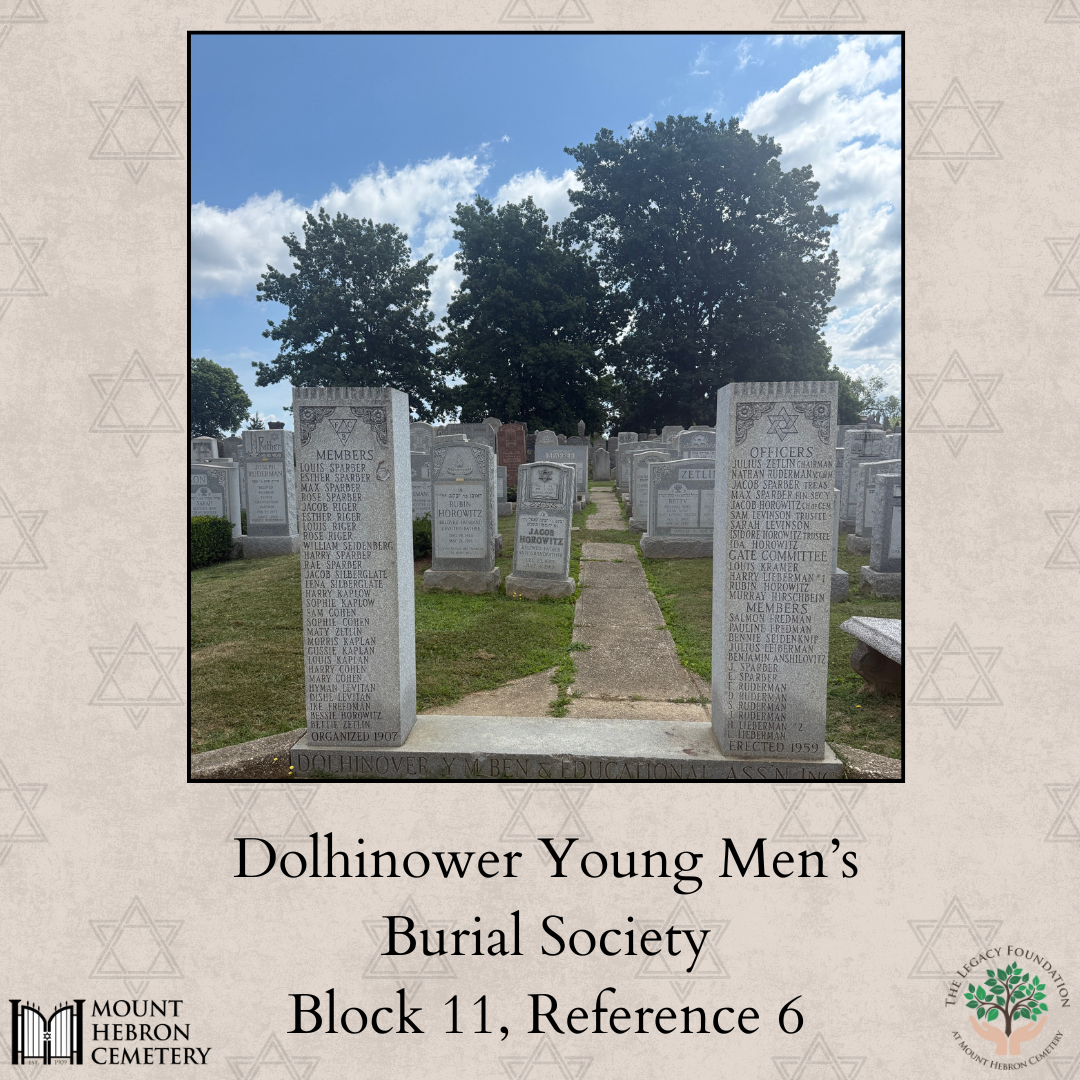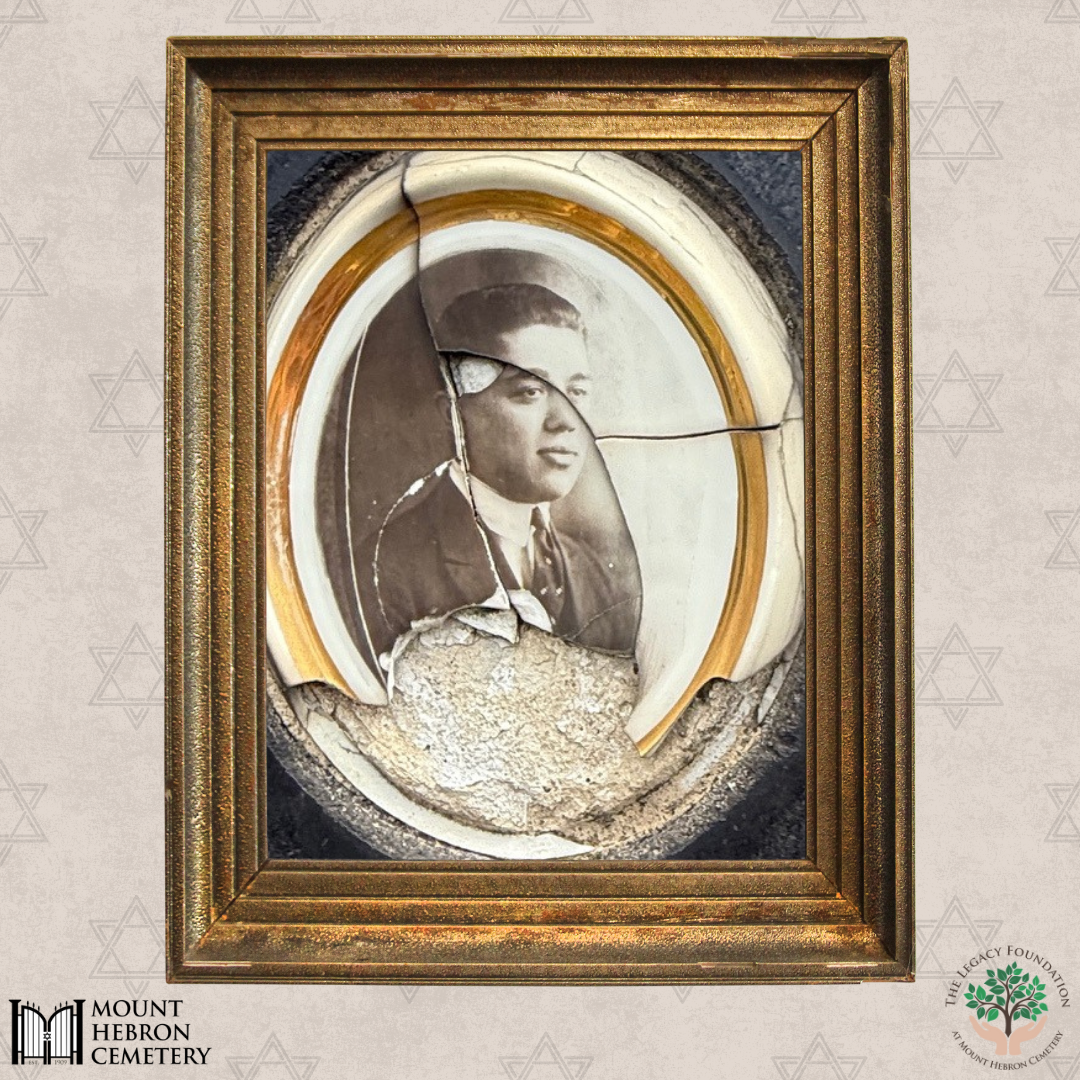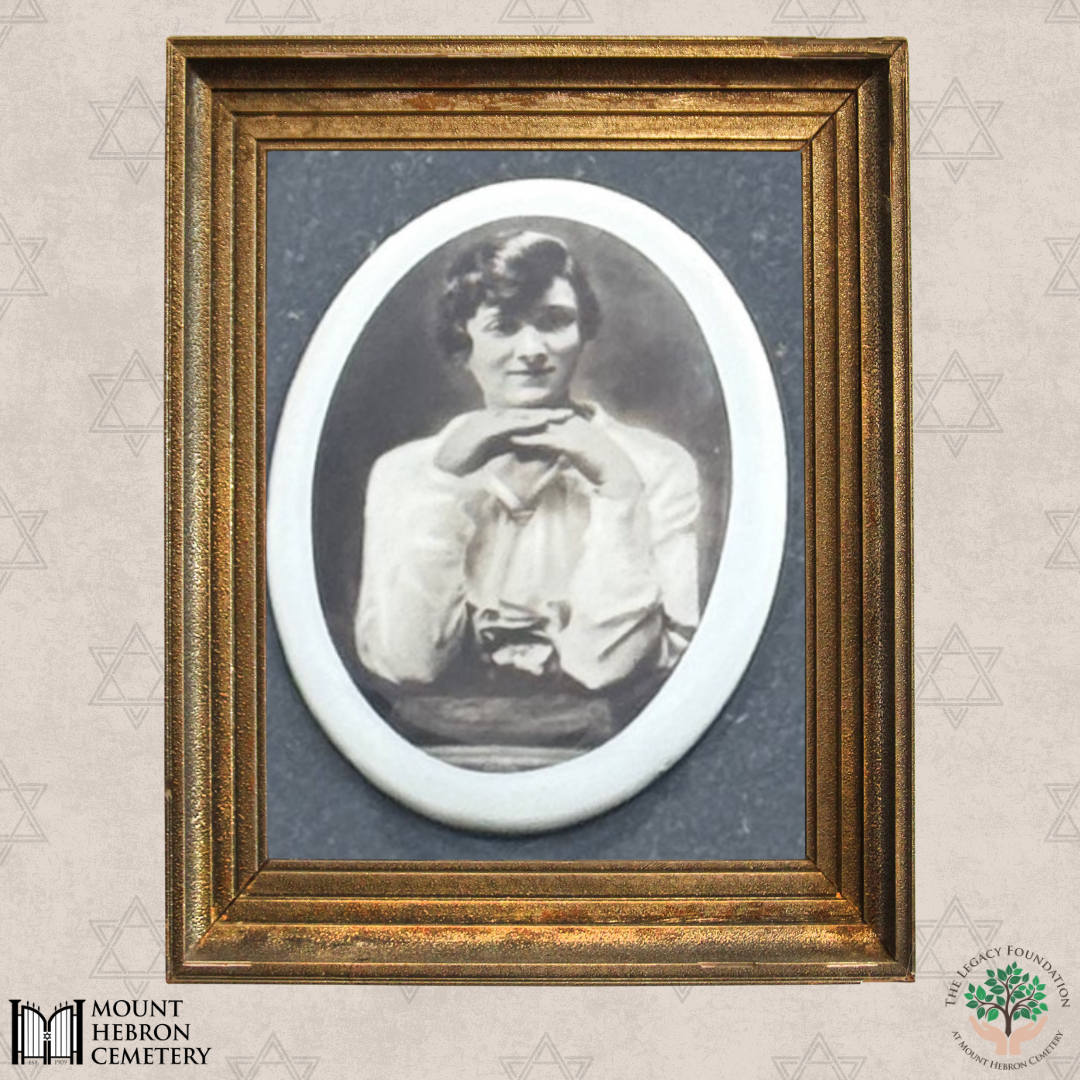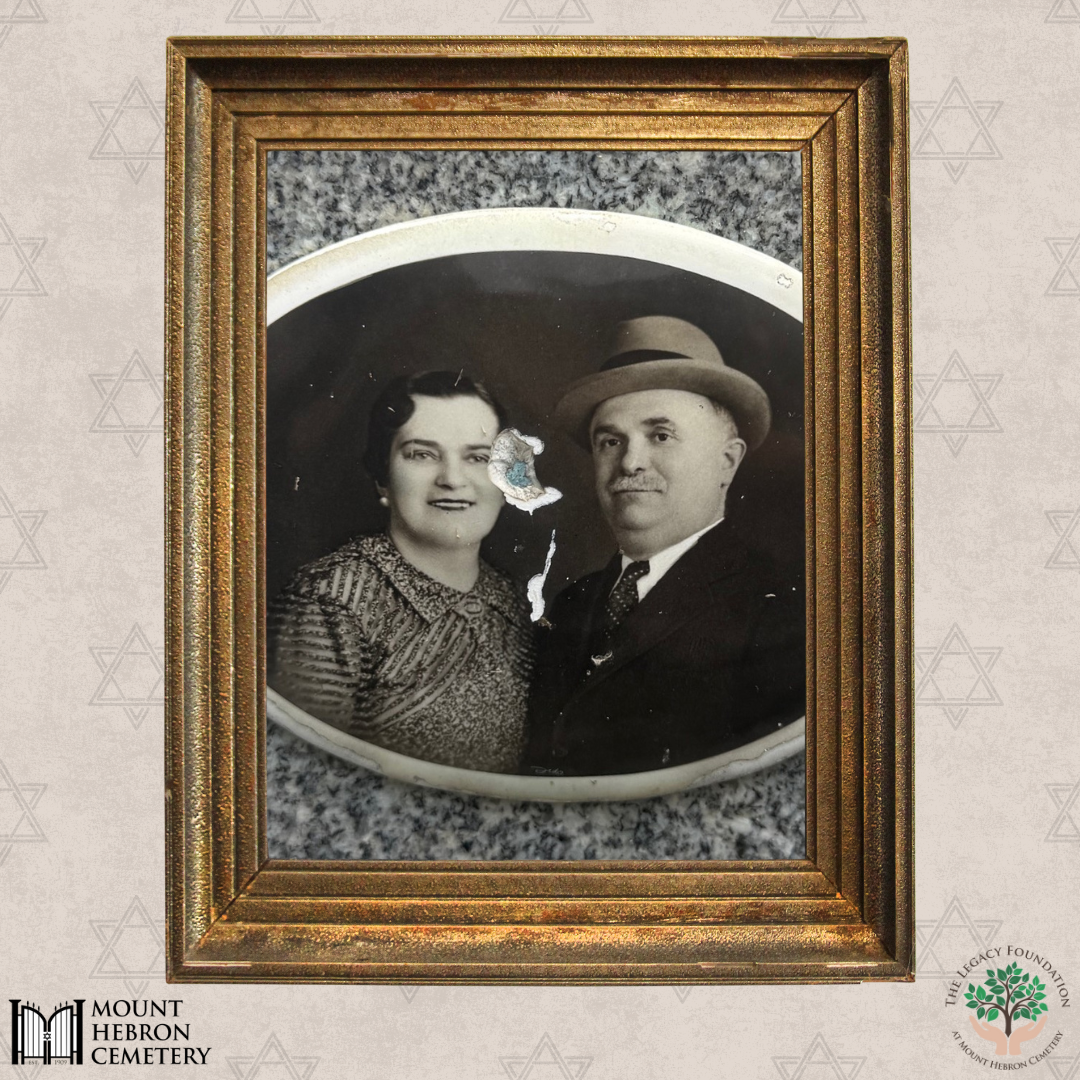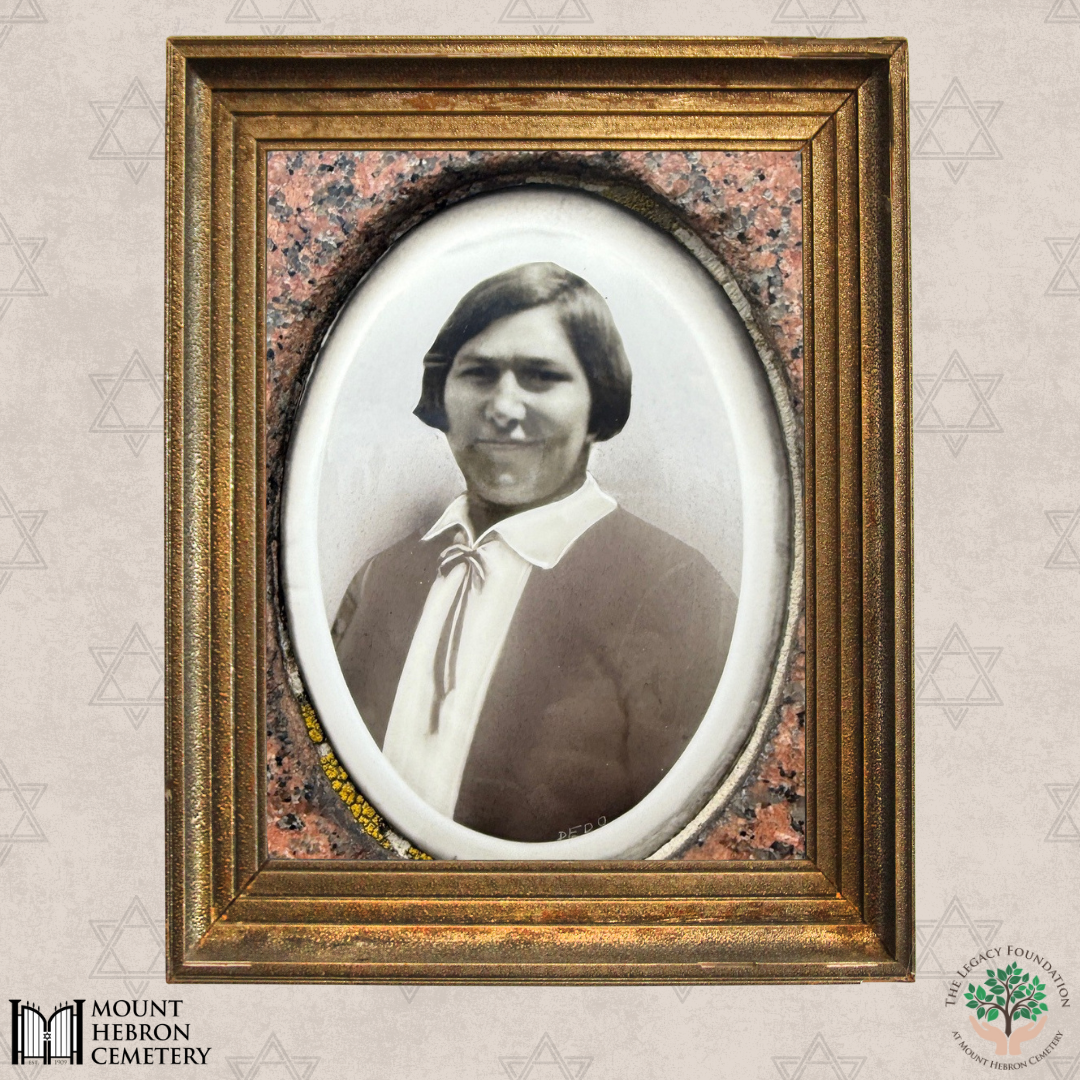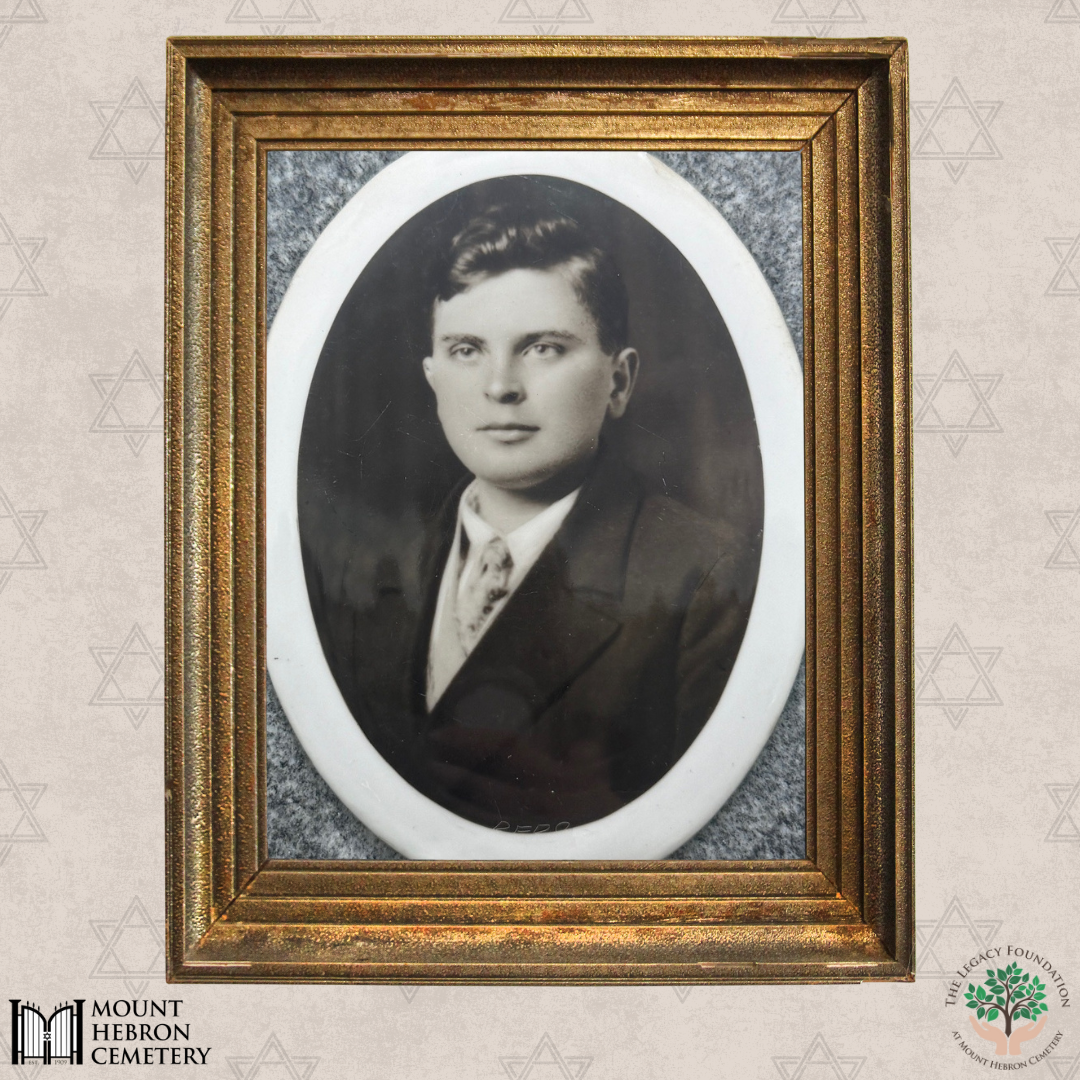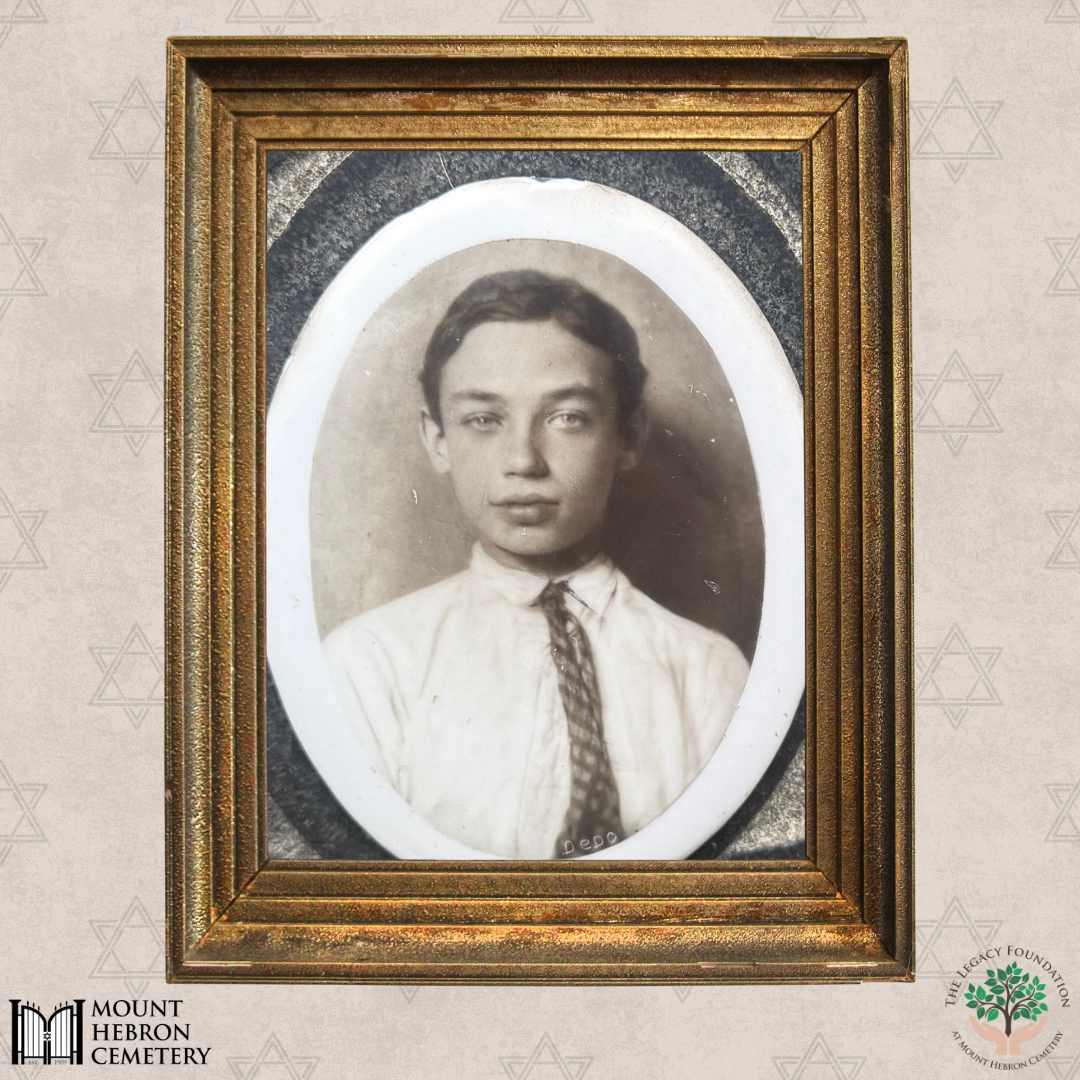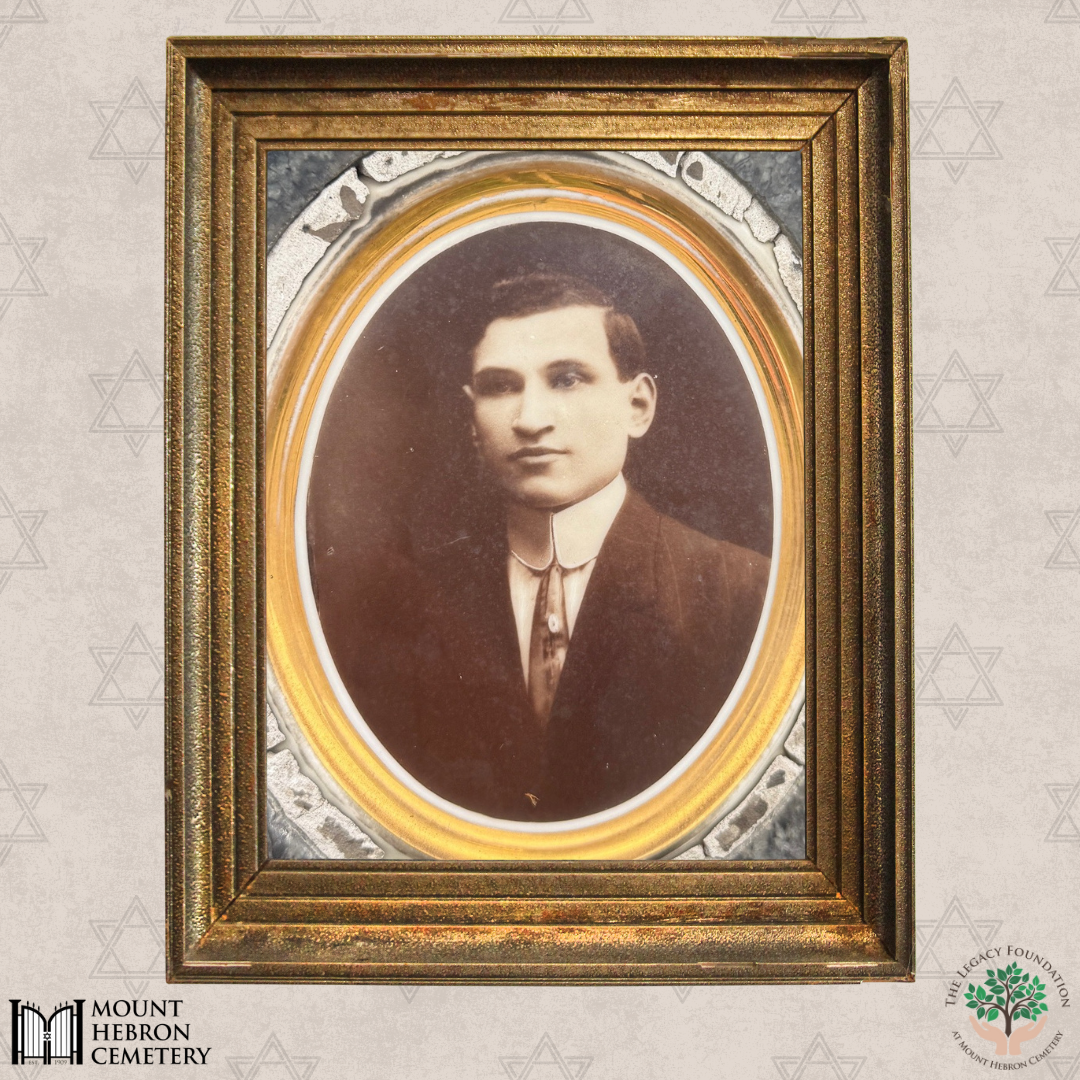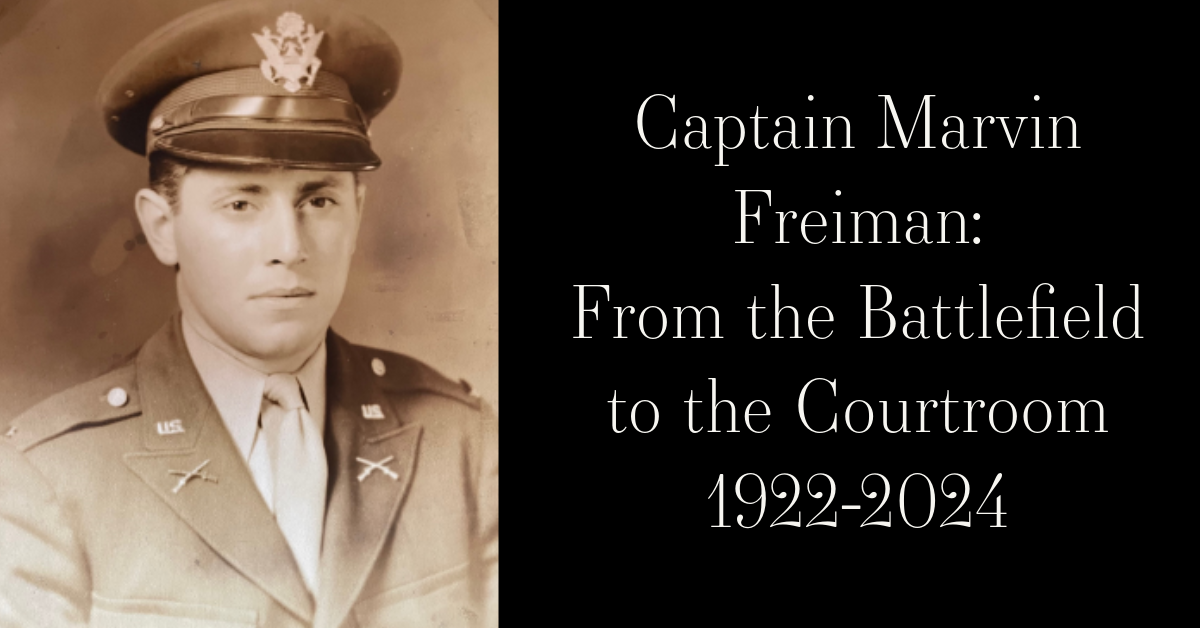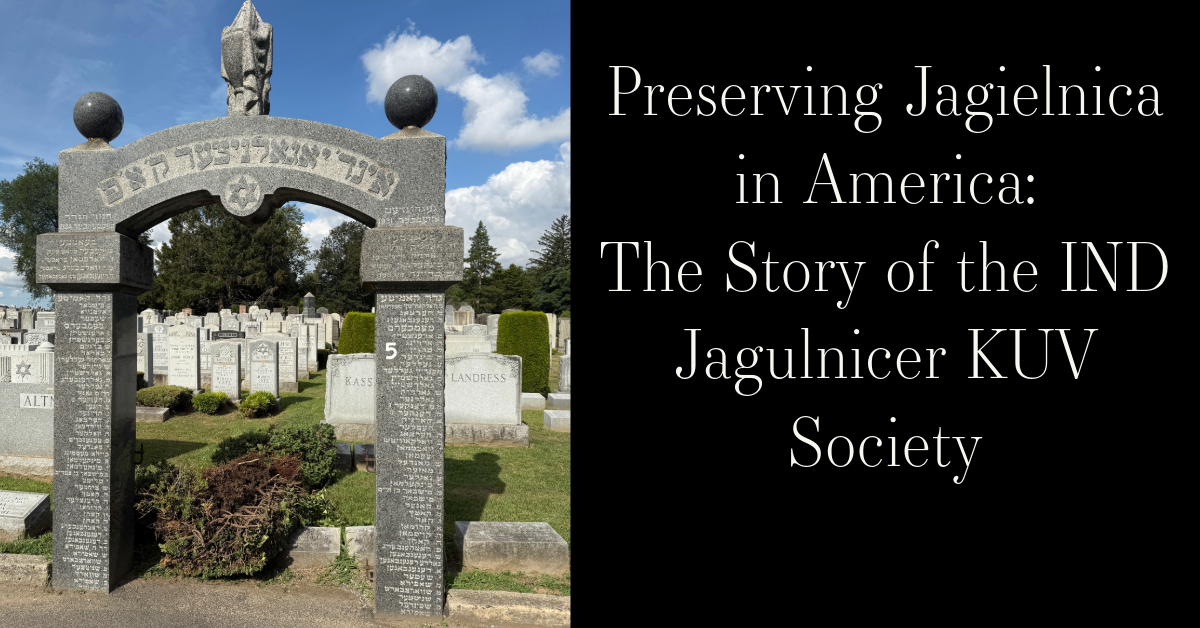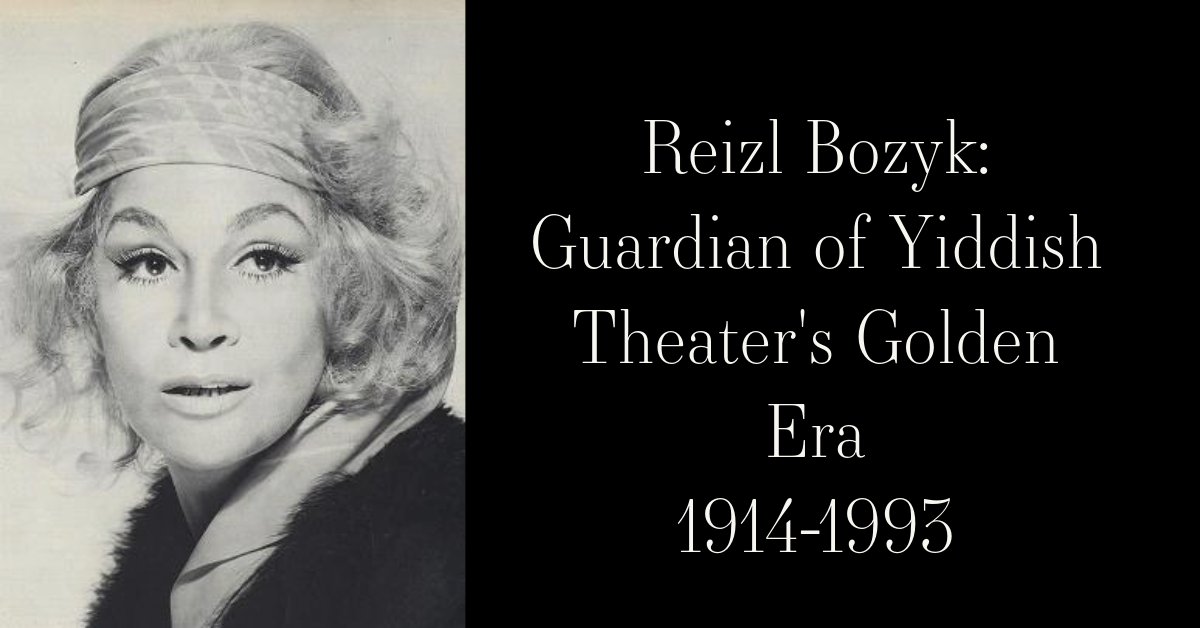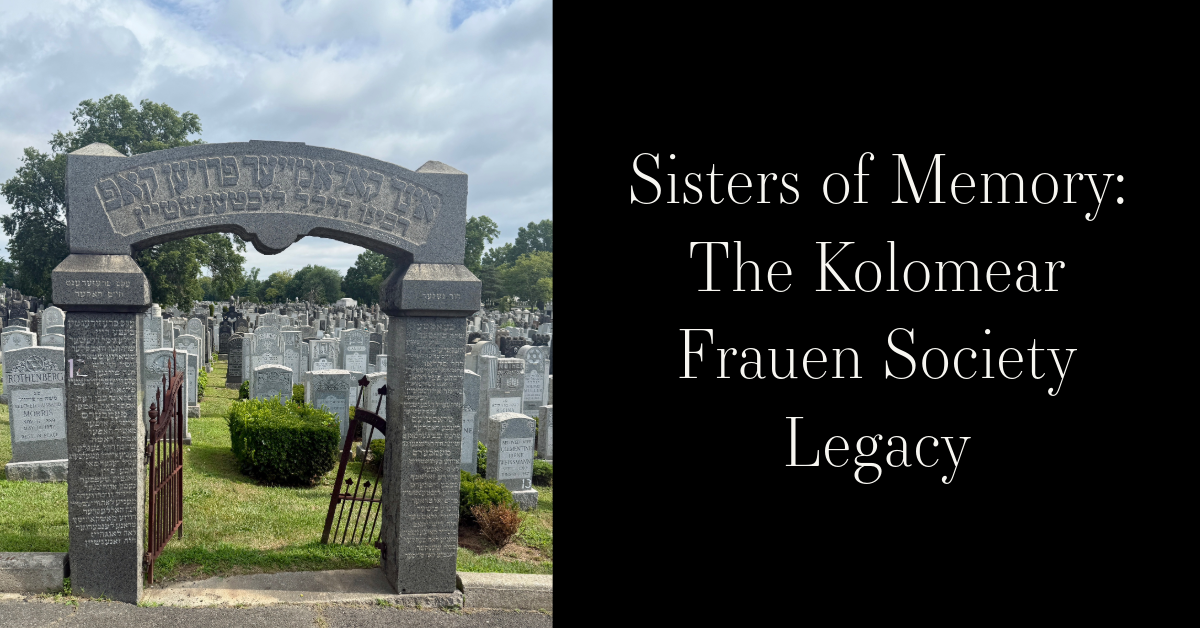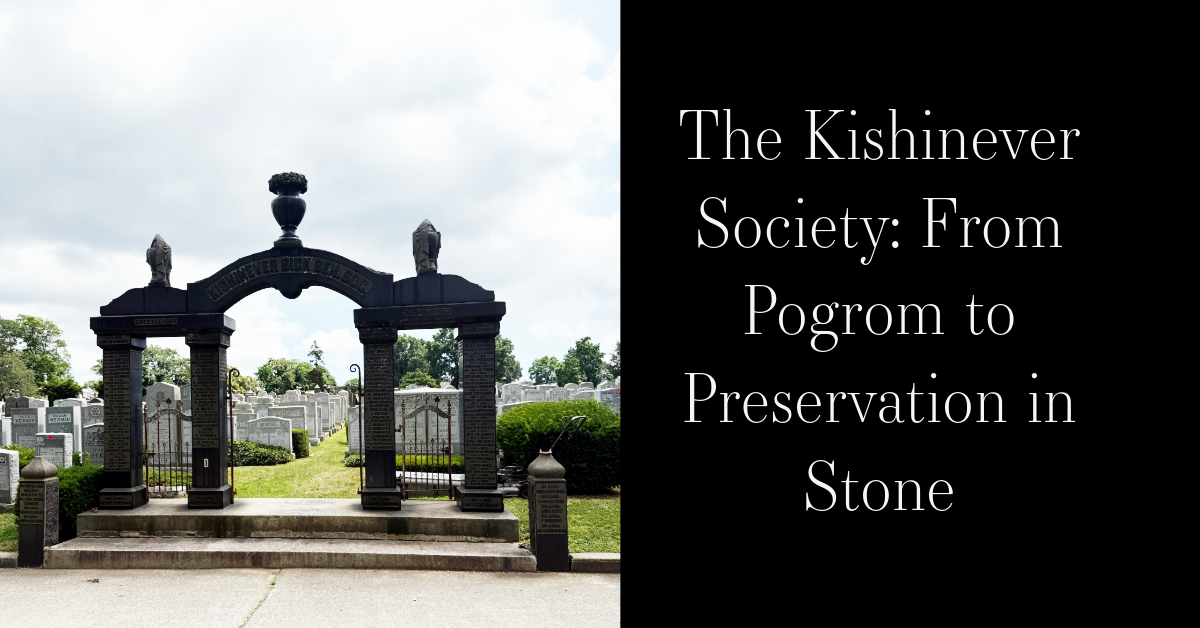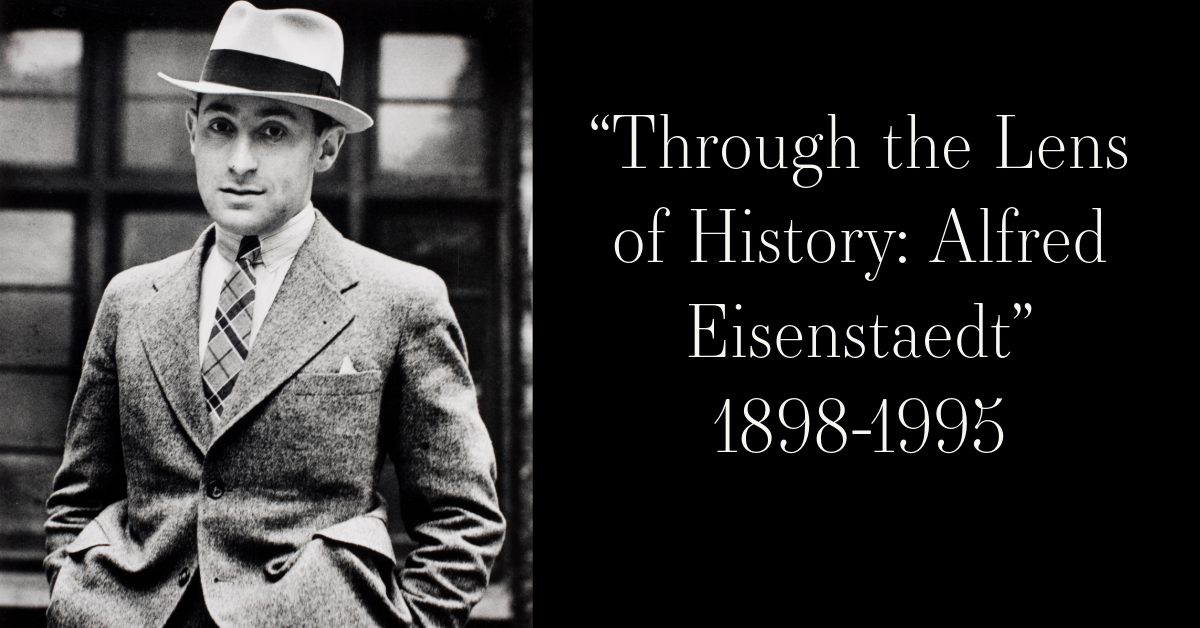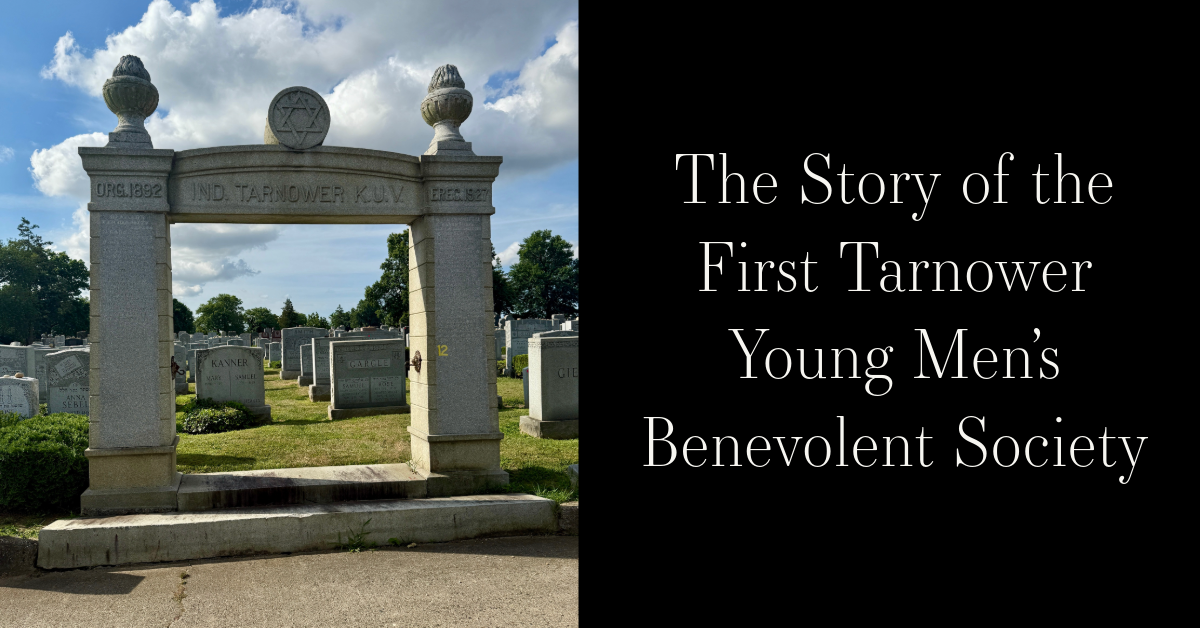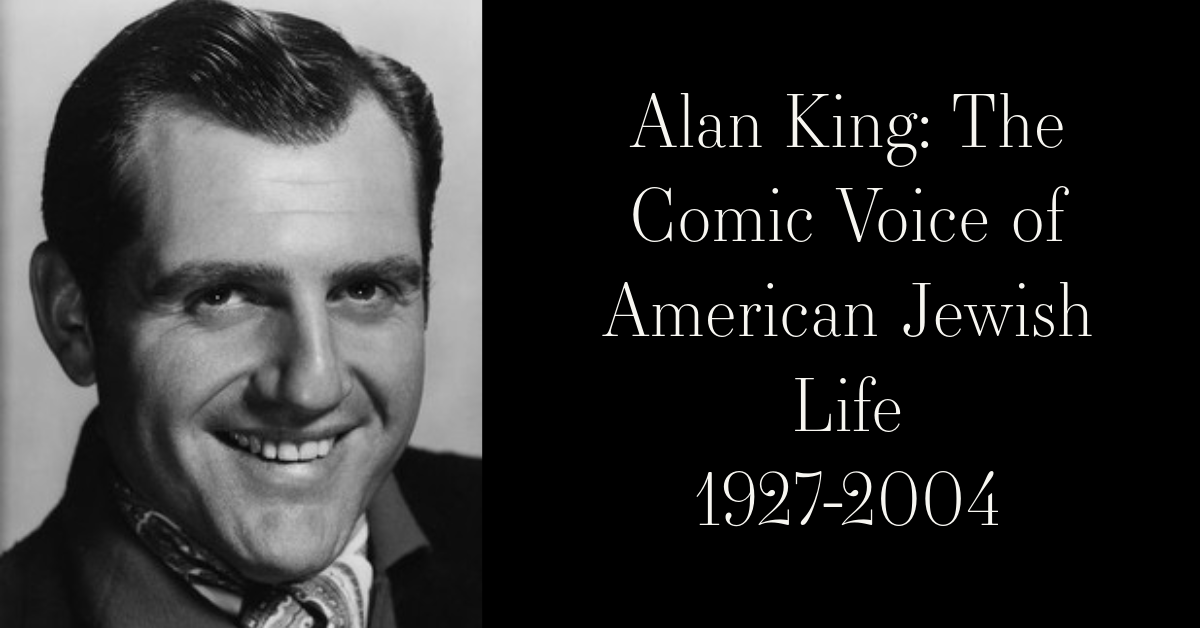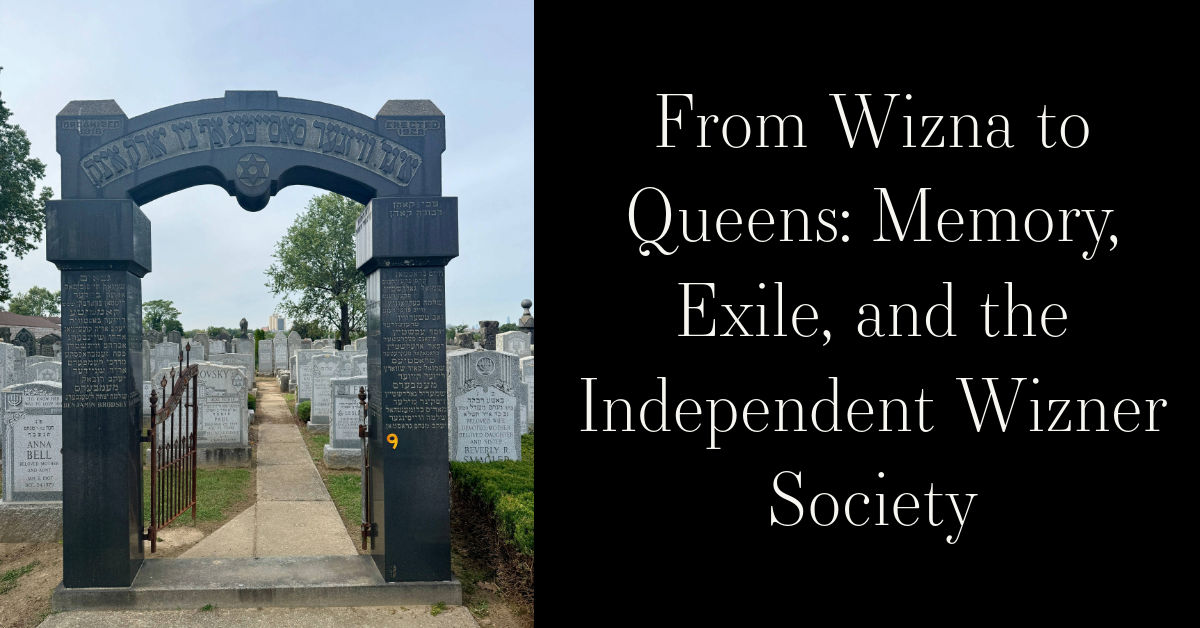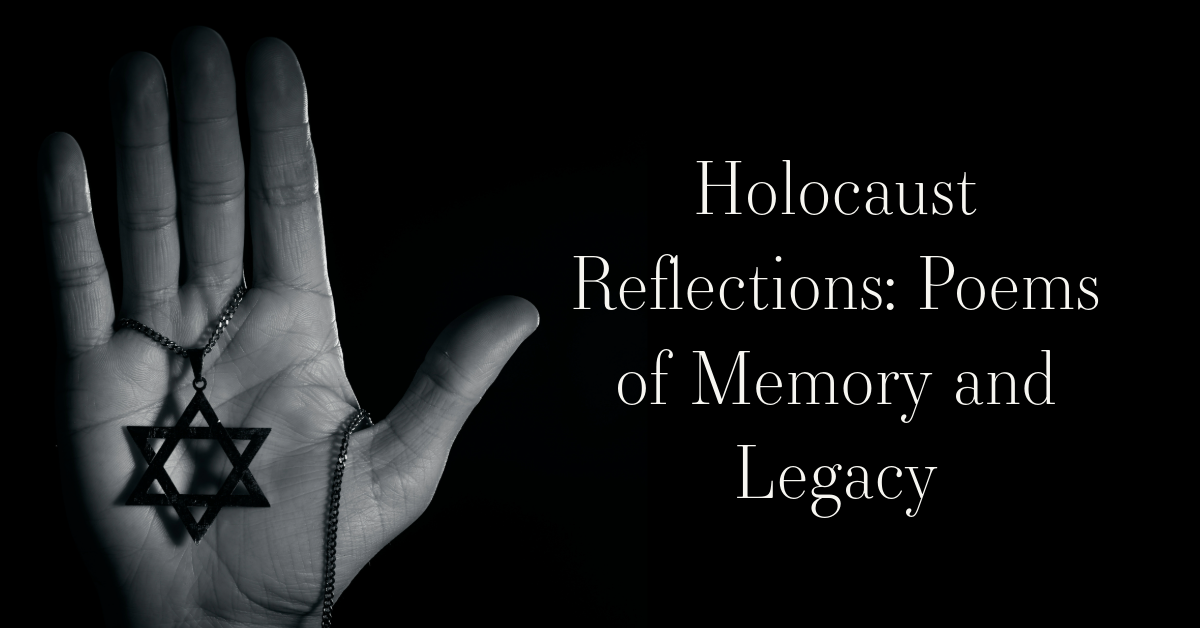Story Summary:
The Dolhinower Young Men's Burial Society was established in New York by Jewish immigrants from the town of Dolhinov, a historic Jewish community in what is now Belarus, to provide proper burial arrangements and mutual support for members from their shared hometown. Like many landsmanshaftn formed in the early 20th century, the society offered connection, dignity, and continuity in a new land. With Dolhinov's Jewish population later destroyed during the Holocaust, the society's burial plot and gate at Mount Hebron Cemetery in Queens stand today as one of the few remaining links to the town's once-thriving Jewish life, preserving its memory for future generations through tradition, record, and stone. ~Blog by Deirdre Mooney Poulos
Remembering Dolhinov:
The Story of the Dolhinower Young Men’s Burial Society
Nestled among the gates of Mount Hebron Cemetery in Queens, New York, lies the burial plot of the Dolhinower Young Men’s Burial Society, one of more than 1,200 such societies formed by Jewish immigrants who came to America seeking safety, stability, and a future. This society was founded by Jews from the town of Dolhinov, a small shtetl located in what is today Belarus. Like so many landsmanshaftn, the Dolhinower society was created to offer burial services and mutual support to immigrants from a shared hometown, preserving the memory of the town and its people while meeting the practical needs of Jewish life in a new land. The burial society is part of a much broader story of emigration, adaptation, and remembrance that runs through the Jewish American experience of the early 20th century.
Dolhinov, known in Yiddish as Dolhinov and in modern Belarusian as Daŭhinava, had a vibrant and deeply rooted Jewish community dating back to at least the 17th century. Located near Vilna, the town was part of the Vilna Governorate under the Russian Empire and later the interwar Polish Republic. Its Jewish population built synagogues, studied Torah, and engaged in trade and crafts that were essential to the regional economy. Dolhinov was known for its rabbinic scholarship and traditional Jewish life. The community experienced periods of hardship, including forced conscription, poverty, and waves of antisemitism, yet it remained a center of Jewish life in the region. With rising antisemitic violence in the Russian Empire and limited opportunities for economic advancement, many Dolhinov Jews began to emigrate in the late 19th and early 20th centuries, with a large number settling in New York.
In their new homes, Jewish immigrants from Dolhinov and other towns often organized burial societies as one of their first communal efforts. These groups served several essential functions. They purchased cemetery plots, ensured proper Jewish burials, supported mourners during shiva, and provided a community for members to remain connected to each other and their shared heritage. The Dolhinower Young Men’s Burial Society, formed in this tradition, established a designated burial section at Mount Hebron Cemetery. This society offered a place of dignity and belonging in death as well as in life, giving members the assurance that they would be laid to rest with their landsleit according to Jewish customs.
During the Holocaust, the Jewish community of Dolhinov was destroyed. Under Nazi occupation, Jews were confined to a ghetto and eventually murdered in mass executions in 1942. Entire families and centuries of culture vanished in a matter of weeks. The destruction of Dolhinov’s Jewish community was complete, leaving only the diaspora and scattered documents to tell its story. In this context, the Dolhinower Young Men’s Burial Society became more than a mutual aid group. It became a living memorial. The society’s burial plots and gate at Mount Hebron now stand as one of the last tangible links to the town and its Jewish population, a resting place for those who carried Dolhinov in their hearts even as they built new lives in the United States.
Today, efforts to preserve the memory of Dolhinov are continued by descendants and researchers. Eilat Gordin Levitan’s website is a rich source of historical material and testimony about Dolhinov’s Jewish life. Through photos, survivor interviews, family records, and memorial lists, the site documents a community that once thrived in Eastern Europe and was rebuilt in memory through societies like the one at Mount Hebron. The Dolhinower Young Men’s Burial Society is part of this broader mission to preserve heritage, honor the dead, and ensure that the stories of small towns like Dolhinov are not forgotten. ~Blog by Deirdre Mooney Poulos
Work Cited:
JewishGen Communities Database – Dolhinov: https://www.jewishgen.org/Communities/
Eilat Gordin Levitan – Dolhinov Memorial Page: https://www.eilatgordinlevitan.com/dolhinov/dolhinov.html
Yad Vashem – Central Database of Shoah Victims’ Names: https://yvng.yadvashem.org
United States Holocaust Memorial Museum – Dolhinov: https://encyclopedia.ushmm.org
Jewish Genealogical Society of New York – Burial Society Index: https://www.jgsny.org
Find A Grave – Mount Hebron Cemetery: https://www.findagrave.com/cemetery/65403/mount-hebron-cemetery
Jewish Virtual Library – History of Jews in Belarus: https://www.jewishvirtuallibrary.org


